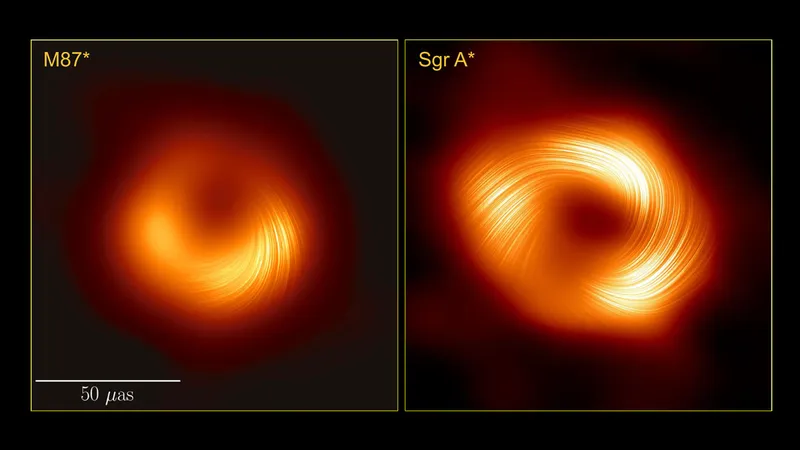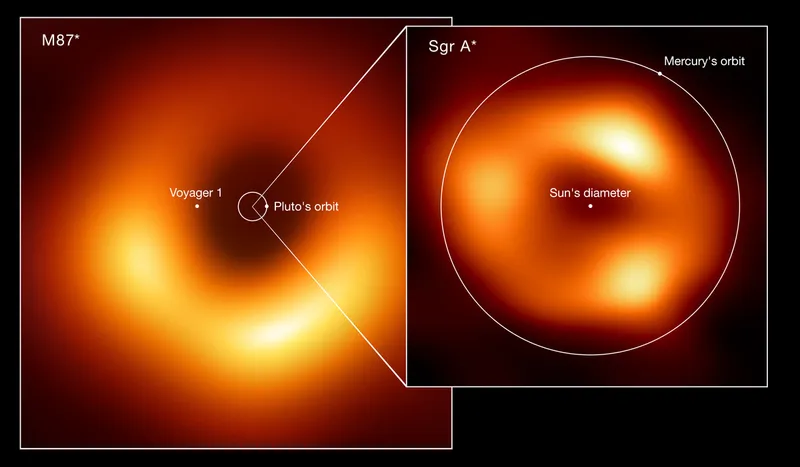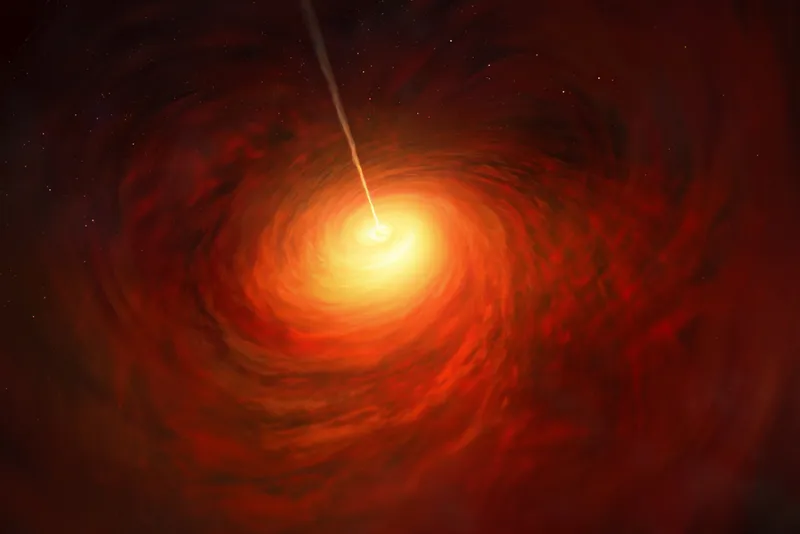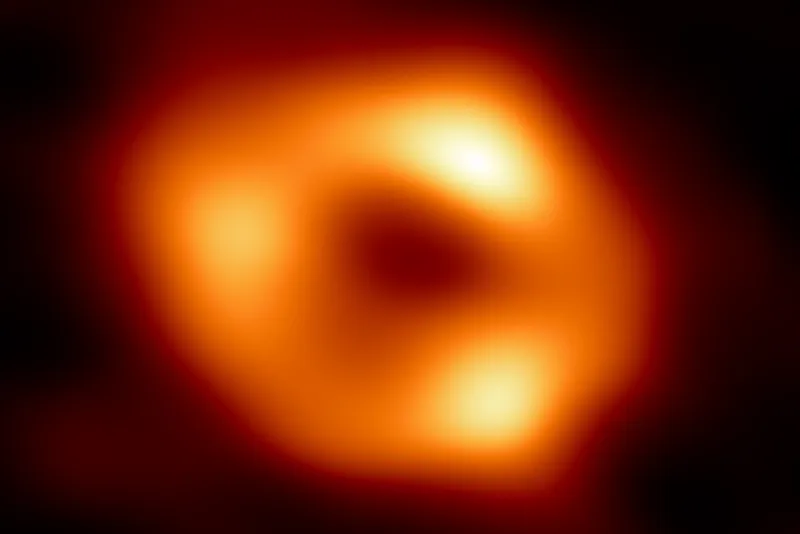It’s been almost two years since the world first became acquainted with the supermassive black hole lurking at the centre of the Milky Way, Sagittarius A*, or Sgr A* for short.
A monster in every sense of the word, Sgr A* weighs as much as four million suns and is surrounded by a hot bubble of swirling gas. Despite its size, however, its distance of some 27,000 light years from Earth makes it appear in the sky no larger than a doughnut would look on the Moon's surface.
The new research, published in the journal The Astrophysical Journal Letters and released by the Event Horizon Telescope (EHT) collaboration, has captured Sgr A* in polarised light for the first time.
Much like how your sunglasses can filter polarised light – as in, light that only oscillates in one direction instead of randomly – from the Sun, astronomers use polarised light to unveil otherwise hidden magnetic fields.
The lines on the image show the orientation of polarisation, which is related to the structure of the magnetic field around the black hole.
“This spiral pattern that we see swirling around the black hole indicates that the magnetic fields must also be a spiral pattern whirling around – and that they're very strong and very ordered,” Dr Sara Issaoun, NASA Hubble Fellowship Program Einstein Fellow and co-lead of the project told BBC Science Focus.

The first-ever image of a black hole was unveiled by the EHT back in 2019 and showed the much larger black hole at the centre of the Messier 87 galaxy (M87*).
M87* is about 1,000 times more massive than Sgr A*, meaning it rotates more slowly which makes it much easier to image.
While astronomers unveiled an image of the magnetic field around M87* back in 2021 (seen on the left in the image above), it’s taken them a further three years to overcome the challenge of capturing our own supermassive black hole in polarised light.
undefined
To the surprise of the team, despite the disparity in sizes between the two black holes, the new image shows the structure of the magnetic fields are remarkably similar, suggesting that strong magnetic fields are fundamental features of all supermassive black holes.
“Along with Sgr A* having a strikingly similar polarisation structure to that seen in the much larger and more powerful M87* black hole, we’ve learned that strong and ordered magnetic fields are critical to how black holes interact with the gas and matter around them,” Issaoun said.

Previous studies of M87* revealed that the magnetic field around it drives powerful jets of energy and matter that extend far beyond its galaxy. While astronomers have imaged jets surrounding M87*, they have remained elusive around Sgr A*. However, the new images reveal startling similarities between the two black holes, hinting that a jet could be present in both.
Explaining the significance of this finding, Issaoun said, “In the host galaxy, the jets kick start star formation – and can also quench it. So there's a really interesting interlink between the dynamics of these jets coming from these black holes and the host galaxy's evolution.”
“I think we would learn a lot about the history of our galaxy from that connection.”

A single telescope wouldn’t be powerful enough to observe Sgr A*, so to capture the black hole the EHT Collaboration links a network of eight telescopes across the globe, effectively creating an Earth-sized telescope.
Data from each telescope, along with exact timestamps of when they were collected, are combined using powerful supercomputers to produce the final images we see via a technique known as 'Very Long Baseline Interferometry'.
Since the EHT conducted its first round of observations in 2017, astronomers have been constantly upgrading it, adding new telescopes and upgrading the ones already involved in the collaboration.

With this new and improved EHT scheduled to observe Sgr A* again next month, astronomers are hopeful that they may finally be able to reveal a hidden jet, as well as other features of the beating heart of our galaxy.
Whatever the EHT unveils next, expect more spectacular images and maybe even real-time video footage in the coming years.
About our expert
Sara Issaoun is an observational astronomer and a member of the Event Horizon Telescope (EHT) collaboration. Her research centres around the collection, calibration, and imaging of millimeter-wave radio observations of supermassive black holes. She co-led the project that produced the new image of Sagittarius A* in polarised light.
Read more: